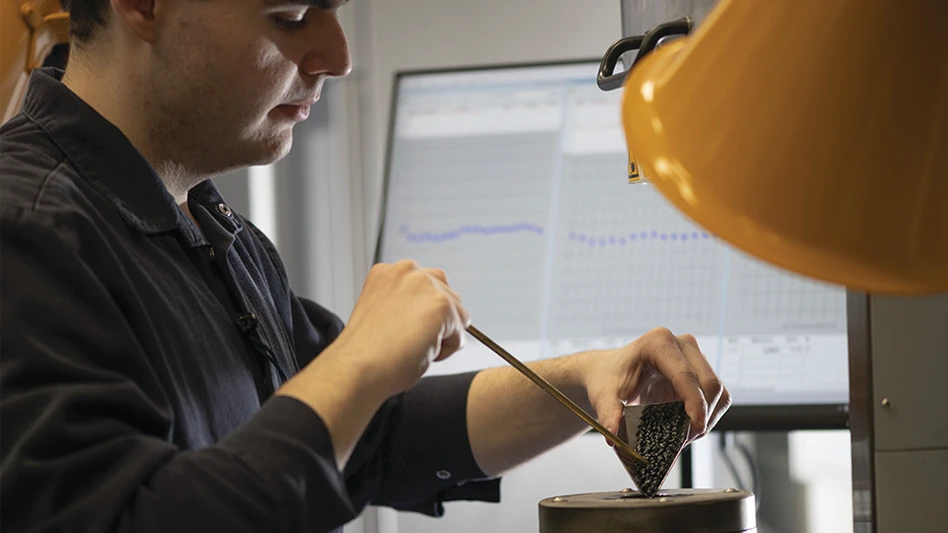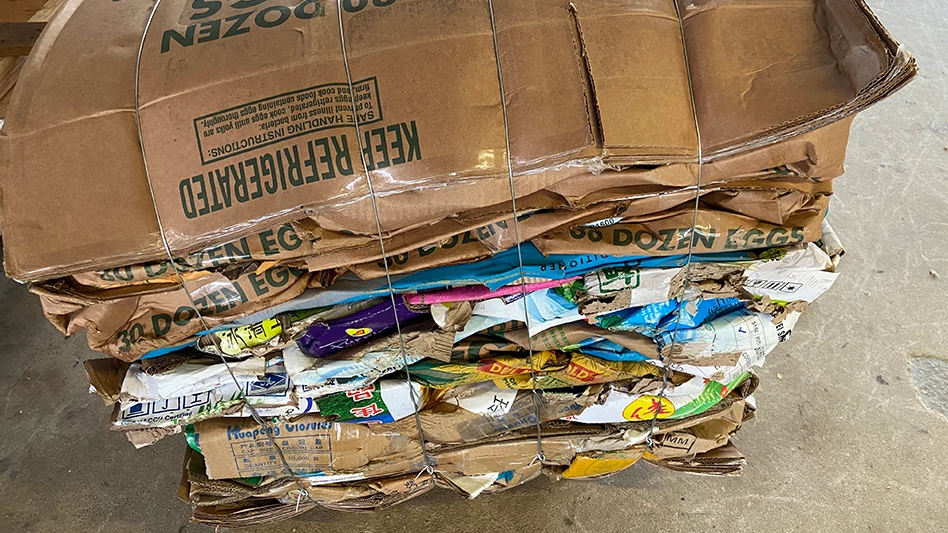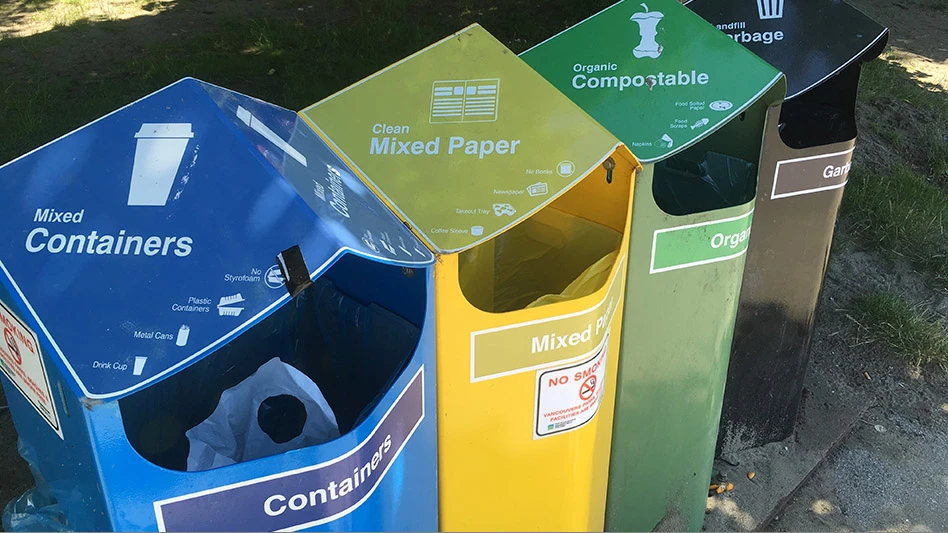
Sidney Wildes has a long history in the baling equipment industry. “I’ve always built balers or sold them,” he says of his career, which began in 1977.
Wildes was the owner of IPS Balers, Baxley, Georgia, a manufacturer of ferrous, nonferrous, plastics and mixed fiber balers, for roughly 20 years before selling the company to the San Diego-based CP Group in 2008. (Avis Industrial purchased IPS from CP in 2014, eventually integrating the company’s baler line into Harris, Cordele, Georgia.)
”… if you care about making sure your baler is operating properly, housekeeping is critical.” – Sidney Wildes of Waste 2 Solutions
Today, Wildes co-owns the company Waste 2 Solutions, also based in Baxley, with his son, Sid Wildes. Waste 2 Solutions offers new and used equipment, installations, conveyor systems and equipment refurbishment in addition to service and parts for baling equipment.
While Wildes has a number of tips to keep balers operating optimally, his overriding recommendation is to be proactive with maintenance. “Plan downtime and have a list of specific items you want to check,” he advises.
Having such a plan and setting time aside allows baler operators to avoid unplanned downtime related to equipment failures and unscheduled maintenance, he says. “You want to be proactive instead of reactive.”
Wildes offers his best tips for baler maintenance.
Baler maintenance basics
Properly train operators. When it comes to optimal baler performance, Wildes stresses the need to properly train operators. “The baler is not going to run right unless you train the operator,” he says.
Many baling equipment suppliers offer training at their facilities or as part of the installation process.
Refer to the manufacturer’s checklist. Wildes says operators must refer to the maintenance checklist provided by the original equipment manufacturer (OEM) for tasks that should be performed monthly, quarterly and annually. He cautions that operators might need to perform the suggested tasks and inspections sooner if their operating hours exceed those specified. For low-volume operations, he advises examining the baler at least semiannually.
Every 1,000 hours, operators should visually inspect their balers to ensure all safety stickers are in place and oil and hydraulic fluid is not leaking, Wildes says. They also should look for damage to the structure and frame of the baler, which can indicate an issue with the baler’s shear blade clearance. (See tip No. 5).
During these inspections, Wildes also advises checking guards and safety switches to ensure they are in place and operating properly. “If not in place, you will have nuisance shutdowns that will interrupt production,” he warns.
If the safety devices are in place and operating properly, but the machine is still shutting down intermittently, operators should pay attention, Wildes says. “There is a reason it is shutting down.”
One possible cause could be that the baler needs oil and the operating temperature is getting too high, he says. Wildes adds that balers are designed to shut down in such instances to prevent further damage from occurring.
Perform general housekeeping. Regarding housekeeping, Wildes says, “People don’t put enough emphasis on that, but it’s very important.”
He suggests cleaning debris from inside and around the baler. Some areas to pay special attention to are behind the ram(s), the sensors and the oil cooler. Cleaning these areas prevents fires and overheating of the machine and reduces the possibility that the oil will become contaminated, Wildes says.
The baling process often can be messy, he says, “but if you care about making sure your baler is operating properly, housekeeping is critical.”
Have an oil maintenance program. Wildes says oil is the baler’s “lifeblood.” He suggests sampling a baler’s oil every 1,200 operating hours, sending the sample to a reputable oil analysis company for testing. Testing kits are available from oil filter suppliers and hydraulics companies, Wildes says.
When reviewing the oil sample results, operators should note the type and degree of contamination.
If the analysis report shows the oil has water in it, that can allow the operator or maintenance staff to narrow down where it could be coming from. The recycling company can then reach out to the baler manufacturer to find out what possible future failures that issue could indicate, Wildes says. “You want to prevent catastrophic failure of the pump or cylinder,” he states, referring to the machine’s hydraulics.
If the oil contains metal fragments, that could indicate problems with bronze bushings in the baler’s main hydraulic cylinder, for example.
When it comes to removing contamination from a baler’s oil, this can be done using mobile filtering equipment that can be brought directly to the baler. “Worst case scenario, you may have to change your oil,” he says.
Changing the oil is recommended if the report shows that the baler’s oil has gotten too hot, Wildes says. In that case, the oil “creates a varnish and is not a good lubricant because it is less viscous,” which he says is “not good for the proper operation of your equipment.”
Wildes adds that baler operators “must be extremely careful about heat.” If the machine is overheating, he says it might mean the oil cooler needs to be blown out, which comes back to the need for good housekeeping.
He advises changing a baler’s oil and air filters every 950 hours as a rule. However, he adds that “this may vary somewhat depending on the environment.”
Inspect shear blade clearance. Wildes says it’s important to keep the shear blade clearance within the manufacturer’s specification. When out of tolerance, the shear blade should be shimmed to return it to specification.
If the shear blade clearance is specified as one-sixth of an inch but has grown to one-quarter of an inch, he says that while that might not seem significant, it is.
“Shear clearance is important because if you have excessive clearance, you will cause damage to the knife beam frame of the baler,” Wildes says. “This will cause structural damage if the shear clearance is out of tolerance and you run it that way for any length of time.”
Baler operators and maintenance personnel can refer to the baler’s owner’s manual for directions on how to properly shim the blade. He says shims normally are supplied with the baler when it is delivered and are available directly from the manufacturer.
If the shear blade clearance does not improve after the shims have been added, Wildes says the baler’s inside liners should then be inspected. “When the wear of these liners is less than half of their original thickness, you need to replace the liners.”
He advises referring to the manufacturer’s specifications for type and harness of the liner required. These liners are typically made from a Hardox steel with a hardness rating of between 400 and 500 Brinell.
Check all the wear parts. Wildes suggests examining the baler’s wear parts, including liners and auto tiers, every 1,000 to 1,500 hours of service, repairing or replacing them as needed. (For more on wire tiers, see the sidebar, “Don’t overlook the wire tier.") He notes that liners should last for 5,000 to 7,000 hours. These hours can vary depending on the material being baled “and if you are checking that knife,” Wildes adds.
He says of relines, “If they don’t have a maintenance department, they can contact a baler service company to help them with that,” adding that most recycling companies’ maintenance staff don’t have this ability in-house.
“Liners inside the machine and the gatherer and ejector (on a two-ram baler) must be replaced by an authorized service company.”
The importance of record keeping
Wildes also suggests that companies keep detailed maintenance records on all their baling equipment, including filing all the oil analysis reports.
”You want to be proactive instead of reactive.” – Sidney Wildes of Waste 2 Solutions
In the case of companies that operate a fleet of baling equipment, keeping track of this information can help operators and maintenance crews determine the differences between each baler and the maintenance required, which aids in creating preventive maintenance programs for each unit based on the tendencies uncovered.
Such records also could make processing warranty claims easier and might increase the baler’s resale value should a company decide to sell it to make room for a new model.

Explore the February 2019 Issue
Check out more from this issue and find your next story to read.
Latest from Recycling Today
- Commentary: How EPR is transforming the packaging industry
- Acerinox names new North American Stainless CEO
- Greenwave closes 2024 books with red ink
- Steel Dynamics nets $217M on record shipments
- Massive Chinese steelmaking rebound recorded in March
- LME looks into sustainable metal pricing
- OnePlanet Solar Recycling closes $7M seed financing round
- AMCS launches AMCS Platform Spring 2025 update





